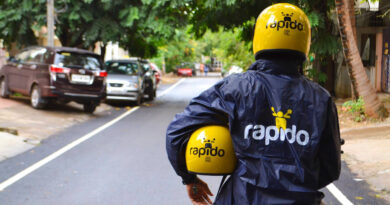5 founders discuss why SAFEs are better for early-stage and bridge rounds
Fundraising is hard, so it’s no wonder that SAFE (simple agreement for future equity) rounds are popular. Conceived by Y Combinator as an alternative to convertible notes, SAFEs have long been considered a founder-friendly way to wrap a venture deal. But, as with most things, the reality is that SAFEs are only an ideal fit for founders sometimes.
To find out how the startup ecosystem is doing deals right now, TechCrunch+ recently surveyed five founders about how they’re thinking about less structured rounds like SAFEs. And it appears SAFEs are still a popular choice, except only for pre-seed and seed rounds — plus fundraising between rounds. After that, though, it appears most founders would prefer priced rounds.
“SAFEs continue to be an exceptionally appealing mechanism for fundraising, particularly from a founder’s perspective,” said Amy Divaraniya, founder and CEO of Oova. “The ease of setup, flexibility in determining terms, and absence of a formal close date make them highly advantageous. Additionally, the streamlined nature of SAFE agreements eliminates the need for extensive legal intervention, resulting in a remarkably cost-effective process.”
While several founders echoed Divaraniya, saying they liked the speed and flexibility of a SAFE round, most had a caveat: By the time a startup reaches the Series A stage, this mechanism is less attractive for a variety of reasons.
Vishwas Prabhakara, the co-founder and CEO of Honey Homes, said that he’s glad his startup raised a SAFE note for its pre-seed round, but for its recent Series A round, he didn’t even consider it.
“Due to how dilution works, it usually doesn’t make sense to stack rounds using SAFEs, in my opinion,” he added.
Both Tory Reiss, the co-founder and CEO of Equi, and Zach Blank, the founder of Hurry, agreed with that sentiment, saying founders have to pay close attention to how different investor equity stakes will convert down the line.
“There’s a significant downside for a company (and founders/employees) with a SAFE,” Blank said. “While it’s great to get investment when price can’t be determined, you need to watch out for ‘gotchas’ at the next round.”
Read on to find out how founders today are using SAFEs, what these rounds look like in today’s less founder-friendly market, and if investor-friendly terms are making inroads into early-stage fundraising.
We spoke with:
- Zach Blank, founder, Hurry
- Amy Divaraniya, founder and CEO, Oova
- Tory Reiss, CEO and co-founder, Equi
- Arman Hezarkhani, founder and CEO, Parthean
- Vishwas Prabhakara, founder and CEO, Honey Homes
Zach Blank, founder, Hurry
Was a SAFE the option that made the most sense for your last round?
We raised a seed round ($2.5 million at a $15 million post-money valuation) in November 2021, the height of the bubble. We had a product in the market with revenue but were still very early. We had been in the market for maybe 30 days at the time we closed the round.
When speaking to investors, a SAFE seemed to be the default option, because there is no real way to price a round this early. So for investors and for us, at the time, a SAFE made the most sense.
Will you use a SAFE in your next fundraising event?
No. There’s a significant downside for a company (and founders/employees) with a SAFE. While it’s great for getting investments when the price can’t be determined, you need to watch out for “gotchas” at the next round.
For example, let’s say you raise on a SAFE at a $15 million post-money valuation and a 20% discount. If your next round is priced at $50 million (good for you!), then all your SAFE investors convert at that price from a dilution perspective. They don’t get diluted at all. That’s the upside for them for being early, but it then leaves less room for new investors down the line.
The most ideal scenario is that you raise at $15 million in the round subsequent to a SAFE with the same cap.
Would you say SAFEs are as attractive to you now as they might have been a few years ago? Why or why not?
No. Ideally, as a founder, you’re able to bootstrap to a business that can be priced. And if you can’t, you should raise a very small amount (more than $500,000) from angels at a reasonable price, say $2.5 million.
Massive seed/pre-seed rounds are a thing of the past and were just a result of ZIRP [zero interest-rate policy] and the bubble we were in.





